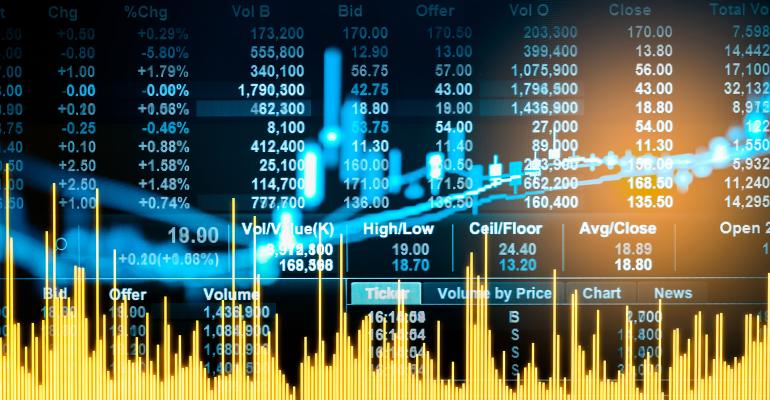With an exchange traded funds’ low expense ratio increasingly being touted by asset managers and utilized as a key selection criterion, CFRA Research worries that too much attention has been paid to a metric that has limited impact on a product’s performance. There are many ETF examples where two similar-sounding ETFs have sizable performance differences that are much wider than the few, if any, basis point fee variance.
Nearly two-thirds of respondents to a recent ETF.com/Brown Brothers Harriman survey believe that expense ratio is a very important factor when selecting an ETF, higher than all other available choices, which include historical performance, trading volume and tracking error. This has been evident in fund flows in 2017, with the five largest asset gatherers in the first 11 months with each incurring a net expense ratio of lower than 15 bps.
Two of these ETFs, the iShares S&P 500 Index (IVV) and Vanguard S&P 500 Index (VOO) charge the same 0.04 percent expense ratio and track the same large-cap index. Not surprisingly, there was minimal performance differences year-to-date through the end of November, with IVV’s 20.3 percent total return barely nudging VOO’s 20.23 percent. Meanwhile, they have replicated the S&P 500 index, up 20.49 percent, quite well. However, while tracking error is used to rate ETFs at other research providers, it was the least important attribute cited in the ETF.com/Brown Brothers Harriman survey. CFRA’s multi-factor ratings include expense ratio and holdings analysis, but not tracking error.
Yet ETF twins IVV and VOO are rare, and there are many examples where there has been a 500 bp or more difference between ETFs that seem to provide similar exposure.
For example, iShares Russell 1000 Value (IWD) rose only 11.7 percent in the first 11 months of 2017 and the value ETF significantly lagged IVV and VOO. It would be easy to infer that value stocks were out of favor as U.S. equities regularly hit record levels. However, iShares Edge MSCI USA Value Factor ETF (VLUE), a fellow iShares value strategy was up 19.9 percent, nearly keeping up with the more diversified IVV and VOO and more than 800 bps than IWD.
CFRA thinks VLUE’s lower expense ratio (0.15 percent vs. 0.2 percent for IWD) played a minimal role and it’s rather the performance that has been driven by its recent, and approximately triple, weighting in the strong performing information technology (24 percent vs. IWD’s 8.6 percent) sector as well as individual stock exposure. For example, VLUE had a 10 percent stake in Apple, while IWD’s third largest holding was the lagging Exxon Mobil. IWD currently has more energy exposure than VLUE, though these ETFs are periodically reconstituted. Despite its lower fee and strong 2017, VLUE lagged IWD in 2016 by 190 bps in 2016.
Another example of a popular ETF trailing the S&P 500 index in 2017 was SPDR S&P Dividend (SDY), up 14.43 percent through November. SDY invests in companies that have raised their dividend consecutively over the past 20 years, so CFRA thinks it is also logical to presume that dividend-growth strategies have been a relatively poor investment approach. Yet, dividend-growth peer Vanguard Dividend Appreciation Index ETF (VIG) generated a 20.49 percent total return, more than 500 bps stronger than SDY and even ahead of the cheaper S&P 500 index ETF trackers.
VIG has a 25 bp lower expense ratio than SDY—10 bps compared to SDY’s 35 bps—but to CFRA the low fee is overshadowed by the construction and holdings differences. VIG constituents, such as Microsoft and Texas Instruments, need only to have a 10-year record of dividend increases, not 20 as is required by SDY. CFRA thinks the recent four-fold exposure to tech stocks (14 percent for VIG vs. 3 percent for SDY) provided a boost this year. Yet in 2016, SDY was more than 800 bps stronger, despite its higher expense ratio—a reminder that past performance has limited value in selecting an ETF.
In both of these examples, the expense ratio differences are likely to both persist and yet be minimal drivers of future returns, according to CFRA Research, as they have been in past. Rather, what investors need to understand are the valuation and risk prospects for the ETF’s unique holdings, since most ETF choices are between products tracking different indices.
Todd Rosenbluth is the senior director of ETF and mutual fund research at CFRA Research, which provides forward-looking ratings on approximately 1,350 equity and fixed income ETFs. His ETF research reports can be found on MarketScope Advisor www.cfraresearch.com.





